Part 1 – Outline your beliefs
Part 2 – Finding your child’s preferred “intelligence(s)” and learning style
Part 3 – Choosing a learning style
Part 4 – Locating the curriculum/program and finding resources
Part 5 – Adapting/Modifying the curriculum
Part 6 – Mapping out the year
Part 7 – Mapping out the months
Part 8 – Planning the Week
In Part 8, you planned the week by actually planning the activities daily. You’ve finally arrived at the point where you can plan what your homeschool days will look like.
Outline a Daily Rhythm
As a family, you have already established some kind of routine—whether you did it intentionally or not. You probably have a regular wake-up time, a general time when you eat lunch, and a time when you have dinner. In between, you’ve either filled it in with chores, outings, or perhaps play-based activities.
For homeschooling, become aware of what you’ve already been doing and replace the activities/outings so that they are now more academic-related. Don’t try to restructure your already set-in rhythm unless it was chaotic or didn’t work for your family. Your child has already internalized the patterns of the day, and changing things up for homeschooling might cause anxiety.
Here’s how to keep it simple:

Block in your mealtimes and work your “schooling” around those.
I started brainstorming our daily rhythm by blocking the meals. My son’s meals are sacred and cannot be skipped or delayed.
Your child might not be so demanding with feeding schedules. Yet, I highly recommend that you use your mealtimes as anchors for planning your homeschool day.
While you may not have a set time when your child eats breakfast, you know that it does happen sometime in the morning. The same for lunch and dinner. They usually happen somewhere between midday and early evening, respectively.
Begin by blocking in those meals in your Homeschool Reflections journal.
Based on your child’s developmental level, decide how many activities you can manage to fit in between those meals. As you can see from my brainstorm above, I have included an activity before breakfast. This doesn’t always happen since wake-up times are unpredictable. However, I have that penciled in for those days when the wake-up is earlier. On those days, we attempt four activities.
I have two activities blocked somewhere between breakfast and lunch and one activity between lunch and dinner.
Ask yourself:
- How many formal activities can my child handle in one day? (2, 3, 4 or more? It all depends on his age and developmental level.)
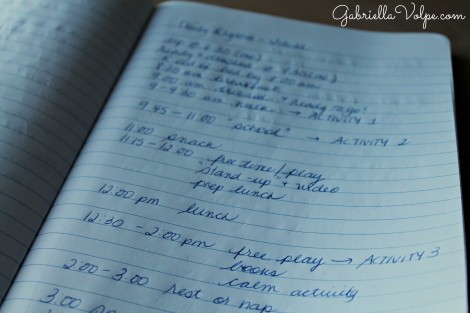
While you don’t have to, some families prefer to list when everything happens in their day. I tried this and found it too restrictive.
Types of activities to include in each block of time
My son and I function better in the morning, so I like to have the bulk of the “schooling” done in the morning while leaving the afternoon activities informal and for rest. However, some activities lend themselves better to certain times of the day.
Below, I share with you some suggestions for activities within each block of time. Please note that you should not do all these activities in a block or even in one day. These are simply ideas you can select from.
For a neurodivergent or disabled child, I suggest varying the activities from fine motor to gross motor, from sitting/floor play to standing, and from a quiet activity to a more active one. The Waldorf approach refers to this as in-breath and out-breath. Every time you plan an energetic activity, follow it with a calming one to balance the activities.
Before breakfast
- Storytelling or reading
- Morning songs and music
- Chores
I try to keep this time of day mellow. We’re only just getting started, and we’re gently welcoming the day. We often do the storytelling in bed, and the songs/music happen while I prepare breakfast.
After breakfast
- Dress up, brush teeth, comb hair (daily personal care)
- Neighbourhood walk (where some nature/science activities can happen)
- Crafts
- Painting
- Modelling
- Baking
- Songs
- Storytelling, reading or puppetry
- Gross motor activities
- Fine motor activities
- Academics (math, ELA, art, science, music, etc.)
- Educational videos
- Free-play
- Etc.
There is usually a snack during this period, which includes self-feeding practice. As I prepare lunch, my son needs to be in a safe place, so I resort to the television, tablet, videos, or podcasts.
After lunch
- Finishing up a morning activity (academic or other)
- Storytelling, reading, or puppetry
- Free-play
- Rest (my son doesn’t nap anymore, but he has to be on his bed for about 45 minutes to 1 hour—he enjoys “resting his bones,” as I like to call it!)
Using this general guideline for our daily rhythm makes it easier for me to plan what we’ll do each day. But, I take this one step further.
I have designated a day each week where we work on one particular element: painting, modeling, crafting/handwork, or baking.

Setting specific activities to explore on specific weekdays helps a child internalize time without relying on a calendar. This is significant for children who are not developmentally ready to understand how a calendar works. Above, you’ll see that on this particular week, I didn’t do any modelling with my son because Monday was a holiday.
In the image above, you can see that I’ve written each activity on sticky note paper, adding “outing” on a fifth one. The Waldorf approach suggests selecting the same day each week for these activities. For instance, baking is always on Monday, painting is always on Tuesday, etc. This is done to help build an internal rhythm of the days of the week for children who are not developmentally ready to understand a calendar.
While this is what I aim to do for the most part with my son, who is not developmentally ready to understand how a calendar works, I know it will not be realistic for us. We sometimes have appointments and visitors. This is why I wrote the activities down on sticky note paper—they can now easily be moved around weekly.
I aim to set the activities for specific days each week, but when that’s not possible, I may switch two (or more) around. What’s important is that my son gets exposed to each of these activities weekly. It also makes planning easier. When I know that we’re to paint today, I can look at my brainstorming for monthly activities and select a painting activity that I want to attempt, and planning is done in seconds.
“Our task is to educate the human being in such a way that he or she can bring to expression in the right way that which is living in the whole human being, and on the other side that which puts him/her into the world in the right way.” ~Rudolf Steiner
Putting it all together
Parts 6 to 9 include all the details you need to plan the year, the months, the week, and each day.
I show you how I organized all of this so that you won’t have note sheets and calendars all over your space.
I’ve never found a planner that works 100% for me, but I don’t believe in reinventing the wheel, either. I’ve taken bits and pieces and assembled them to make my planner—designed specifically for our needs. I’ve included the link to my free planner in the resources so you can put one like this together yourself! I recommend personalizing your planner to best suit your family’s needs. Do a little research. There are plenty of free online printables available.
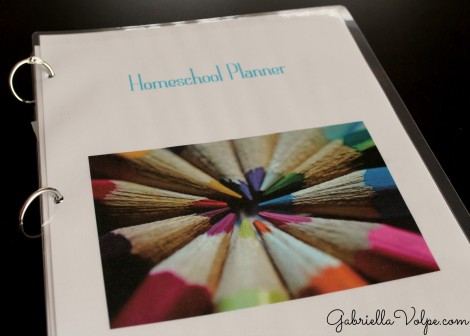
You can create your planner cover by selecting a photo of your choice and giving it a title. Then, laminate, hole punch, and bind it with the rest of your planner using a book ring.

The first sheet in my planner is a blank calendar—for general brainstorming as the year progresses.

Remember this guy from part 6? Hole punch it and add it to the planner.

Here’s the monthly planner sheet from part 7. It goes into the planner, too.
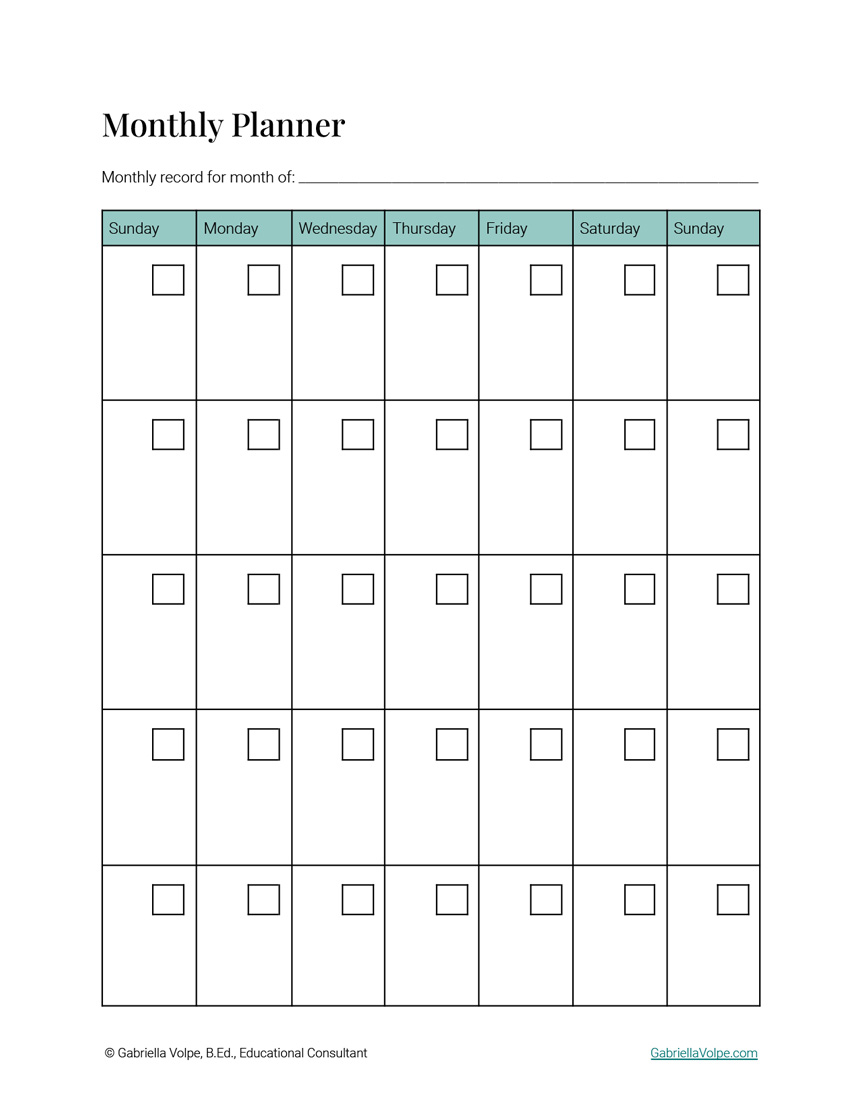
I have the rest of the planner divided by month. At the beginning of each monthly section, I have a monthly calendar for more detailed planning (including special holidays, etc.)
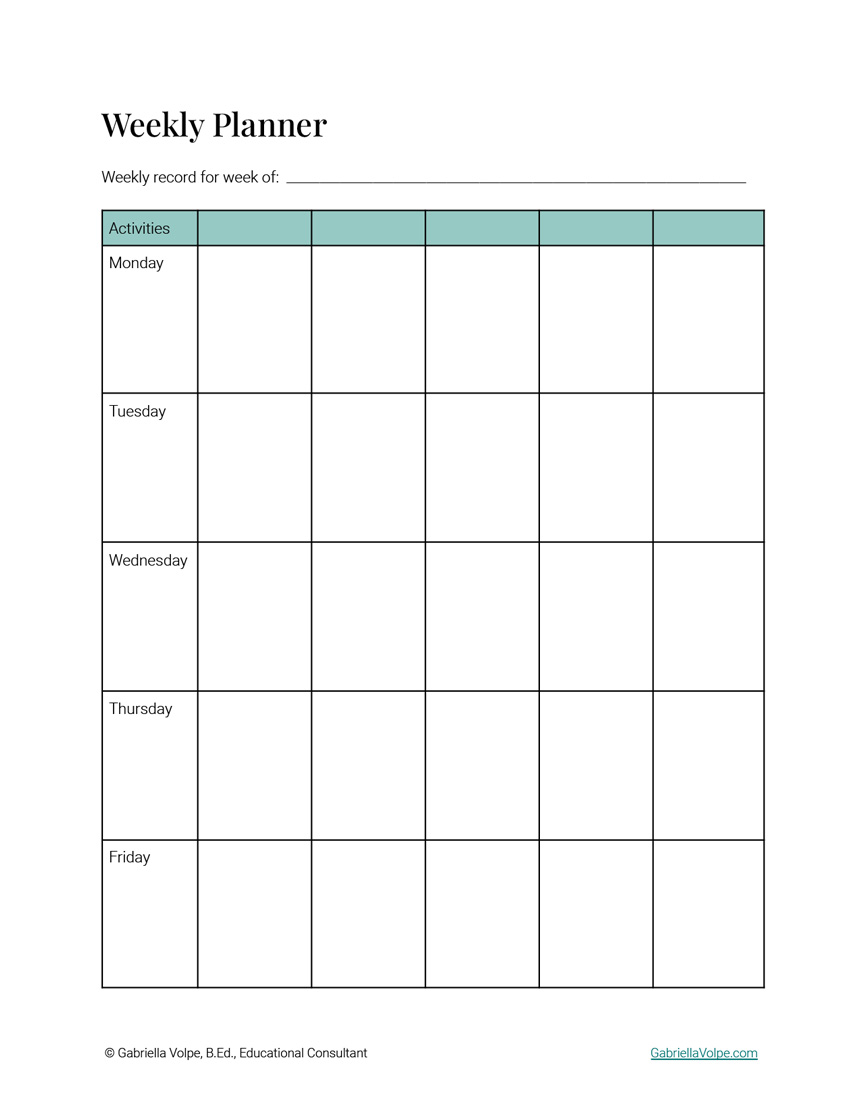
I have printed this weekly planner sheet (discussed in part 8) four times for each month.
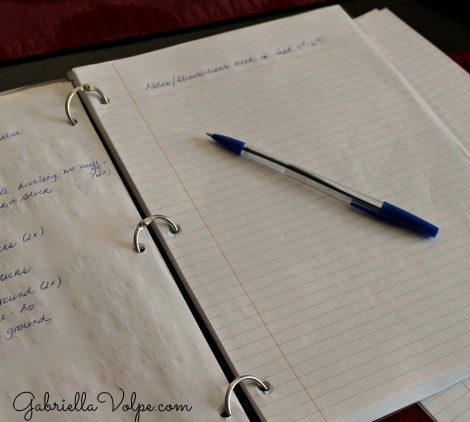
After each weekly planner sheet, I’ve inserted a loose leaf for notes and observations for the week. I also use the back of the weekly planner for songs and chants I make up and want to remember.
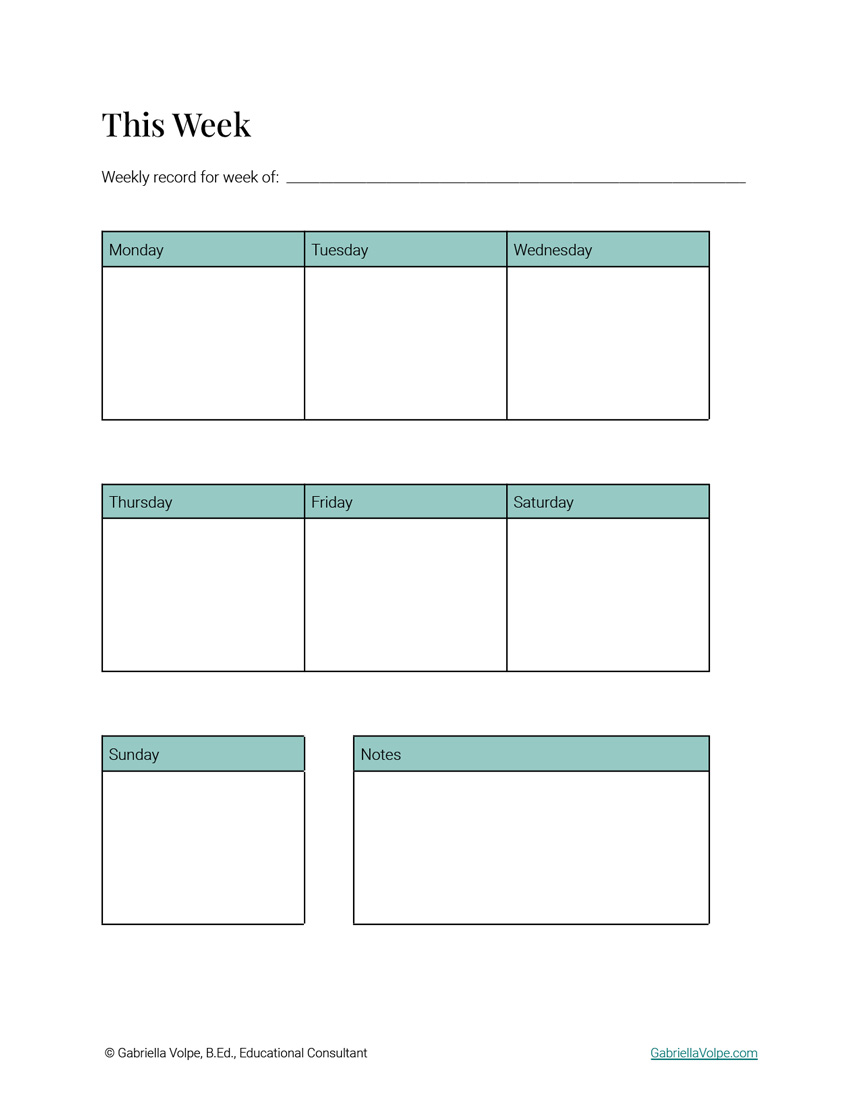
I laminated the blank weekly template at the back of the planner and used it to move around the sticky notes weekly.
The beauty of putting together a planner with book rings is that you can add and remove papers as you wish, but it’s much more portable than a 3-ring binder.
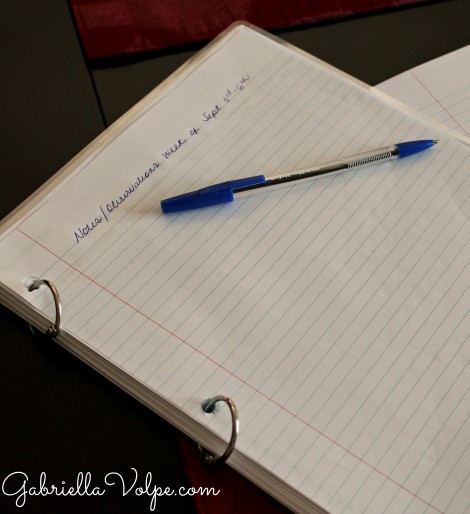
Using book rings makes this planner easily portable. You can fold the booklet over and write in it comfortably. It’s less bulky than a binder. You have all the sheets you need in one place, and you can lay them on your kitchen table or the floor with your child without hogging up the entire space.
There you have it! You’re all set for easy homeschool planning so that you can give your child the full attention they need. The remainder of this series includes tips for finding community resources, assessments/evaluations, and parental reflections.
Download the entire FREE fillable planner here.
Weekly planner – Download this free, fillable PDF in landscape format
I offer individual consultations if you’d like some help planning for homeschooling. Learn how I can support you and your family here.
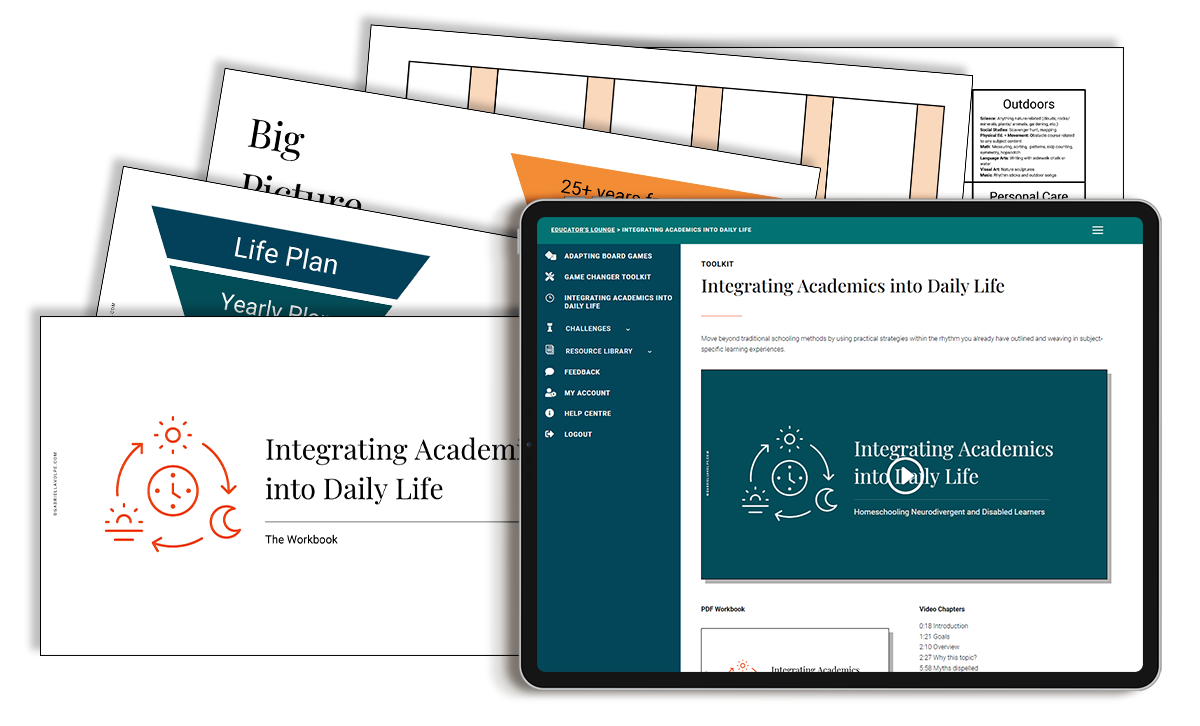
Integrating Academics into Daily Life Workshop
Discover how to integrate academics into daily life. For homeschoolers of neurodivergent and disabled learners.

0 Comments